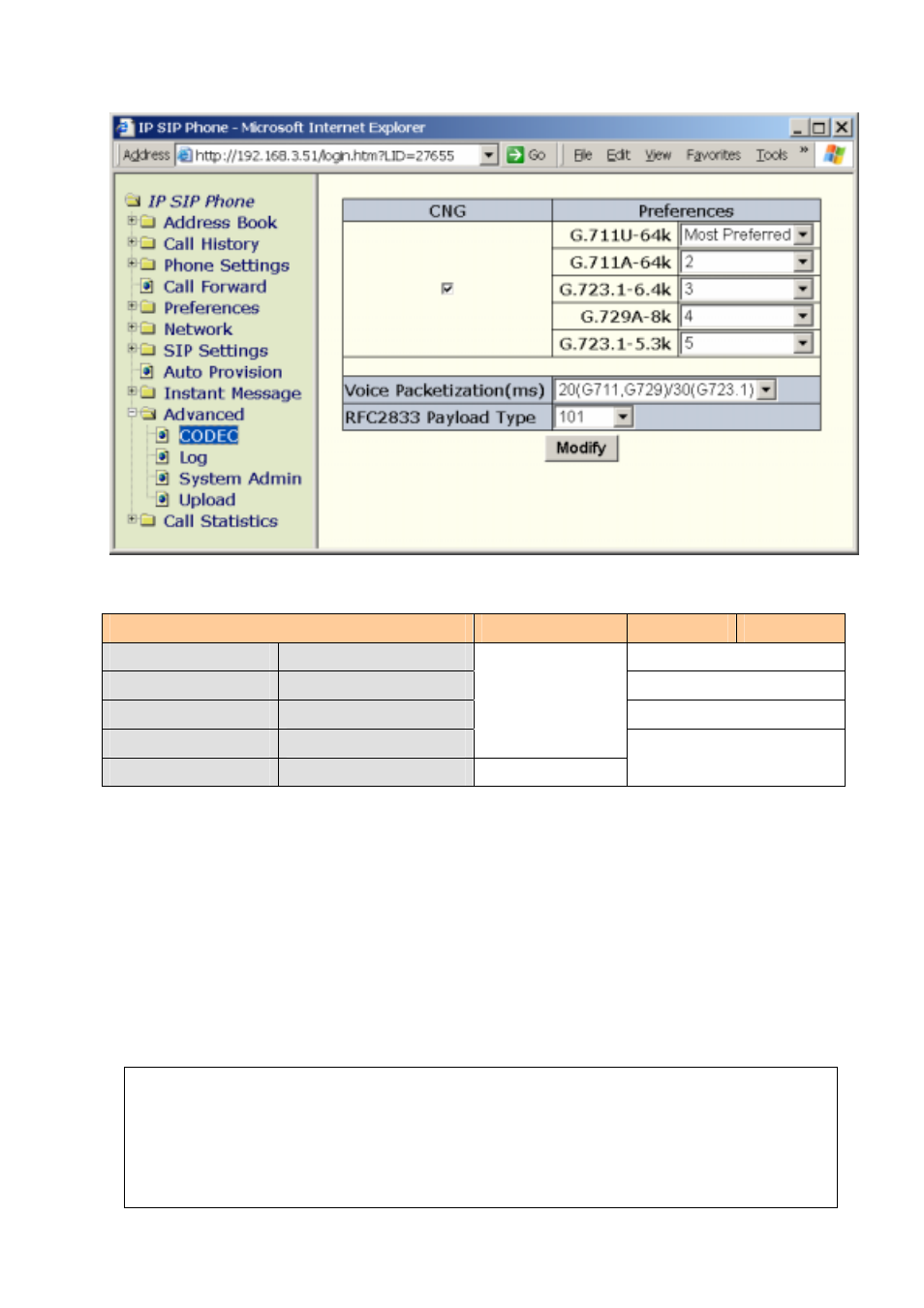ATL Telecom IP300S User Manual
Page 65

IP SIP Phone v2 User’s Guide
Mar. 2005
[65/100]
The phone will adjust the audio frames carried per RTP packet (voice packetization) based
on this setting:
Voice Packetization
G.723.1
G.729A
G.711
10/30(G.723.1)-ms
LAN
1 Frames (10 ms)
20/30(G.723.1)-ms
xDSL, ISDN
2 Frames (20 ms)
30-ms
xDSL, ISDN, Cable
3 Frames (30 ms)
40/30(G.723.1)-ms
56 kbps MODEM
1 Frame (30 ms)
40/60(G.723.1)-ms
Limited bandwidth
2 Frames (60 ms)
4 Frames (40 ms)
The default is “20/30(G.723.1)ms”: 1 audio frame (30 ms voice) per RTP packet for G.723.1
CODEC, and 2 frames (20 ms voice) per packet for all other CODECs such as G.729A and G.711.
Before changing this setting, please refer to the following table “Packet Rate and VoIP
Bandwidth Consumption” to find out the optimal value fit into your environment. We suggest a
reasonable packetization should NOT longer than 40 milliseconds. Pick the longer packetization
time unless you have a very limited bandwidth access at the expense of more latency.
Note: IP SIP Phone will dynamically adjust its voice packetization on a per call basis if the
“ptime” attribute is specified in the peer’s SDP. For example: if “a=ptime:10” is specified, the
IP SIP Phone will ignore the global voice packetization and adjust to the negotiated
packetization time:
INVITE sip:[email protected] SIP/2.0
Via: SIP/2.0/UDP 192.168.3.51:5060;branch=abc7801
From: 7751
To:
Call-ID: [email protected]
